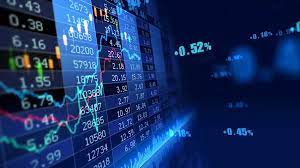If you’re looking to invest in the stock market but don’t want to buy actual shares, then Contracts for Difference (CFD) trading is a great option for you. CFD trading allows you to benefit from price changes in various financial markets without owning the underlying asset. This means you can trade on a wide range of financial instruments including stocks, indices, commodities, and currencies.
CFD trading is a popular form of investment because it offers several benefits including the ability to leverage your trades, access to international markets, and flexibility in your trading style. However, if you’re new to CFD trading, it can seem daunting at first. In this beginner’s guide to CFD trading, we’ll go over the basics of what CFD trading is and how you can get started.
Understand What CFD Trading Is:
CFD trading is a contract between two parties, the buyer and the seller, whereby the seller agrees to pay the difference between the opening and closing price of an underlying asset. When you trade a CFD, you’re not actually buying the asset, but instead, you’re speculating on the price movement of the asset. This means you can go long and buy contracts if you expect the price to rise in the future, or go short and sell contracts if you expect the price to fall.
Choose a CFD Trading Platform:
To start trading cfds, you need to choose a trading platform. The platform should have a user-friendly interface, offer a wide range of markets and instruments, as well as provide educational resources and analysis tools. Some popular trading platforms include eToro, Plus500, and IG. You should also check the fees and commissions involved in trading and make sure they’re reasonable.
Practice with a Demo Account:
Most CFD trading platforms offer a demo account that allows you to practice your trading strategies without risking any real money. A demo account is a great way to get familiar with the trading platform and test out different trading strategies. Once you feel confident, you can switch to a real account and start trading with actual funds.
Develop a Trading Plan:
Having a trading plan is essential when it comes to CFD trading. A trading plan will help you define your trading goals, manage risk, and avoid making impulsive trades. Your trading plan should include your entry and exit points, your risk management strategy, and the amount of capital you’re willing to risk on each trade. Remember, CFD trading involves high risk, so it’s crucial to layout a plan before you start trading.
Stay Informed:
Finally, staying informed about current events, market trends, and economic indicators is essential to successful CFD trading. Keep up to date with financial news and research the markets you’re interested in trading. Many trading platforms offer built-in data and analysis tools which can help you analyze market trends and make informed trading decisions.
Conclusion:
CFD trading is a flexible and accessible form of investment that can offer great returns if done correctly. However, CFD trading also carries significant risks, and it’s crucial to understand what you’re getting into before you start. By following the steps outlined in this beginner’s guide, you’ll be well on your way to successful CFD trading. Remember always to keep learning and developing your trading skills and strategies, and never risk more than you can afford to lose.



